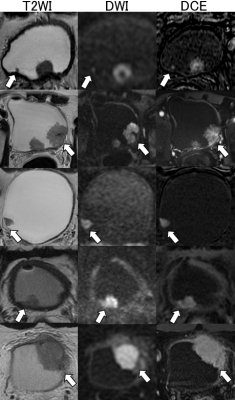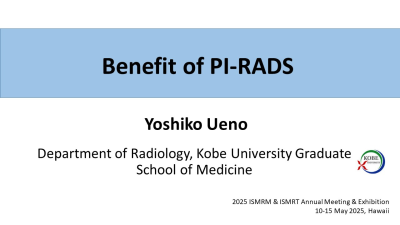Weekend Course
Why? RADS
ISMRM & ISMRT Annual Meeting & Exhibition • 10-15 May 2025 • Honolulu, Hawai'i

| 07:45 |
The Challenge with PI-RADS × Video Permission Withheld
Tharakeswara Bathala
Impact: PI-RADS faces many challenges, including
subjective criteria causing reader variability, inconsistent
image quality, technical differences across institutions,
indeterminate lesions with uncertain cancer risk, and
limitations detecting certain tumors.
|
|
| 08:10 |
 |
The Benefit of BI-RADS × Video Permission Withheld
Sumin Ha
Impact: The standardized lexicon and reporting of breast
MRI using BI-RADS will be discussed. With the anticipated
release of BI-RADS 6th edition, changes in the MRI BI-RADS
will be reviewed. Finally, the benefits of multiparametric
breast MRI will be explored.
|
| 08:35 |
 |
Advancing Bladder Cancer Staging with VI-RADS: Current Status
and Future Perspectives
Yuki Arita, - -, - -
Impact: This lecture reviews the evolving role of
VI-RADS in bladder cancer staging, with updates on
biparametric MRI, peritumoral enhancement, and NAC response
assessment, highlighting its growing value in precision
imaging and treatment decision-making.
|
| 09:00 |
O-RADS
Rebecca Rakow-Penner
|
|
| 09:25 |
Break & Meet the Teachers |
|
| 09:55 |
The Challenge with BI-RADS
Wendy DeMartini
|
|
| 10:20 |
 |
The Benefit of PI-RADS × Video Permission Withheld
Yoshiko Ueno
Impact: PI-RADS standardizes prostate cancer diagnosis,
improving MRI-guided biopsy accuracy and reducing
unnecessary procedures. AI enhances PI-RADS evaluation as a
support tool for radiologists. Standardization, inter-reader
agreement, and MRI quality assessment further improve
diagnostic reliability.
|
| 10:45 |
 |
Biological Diversity of HCC and the Benefit of LI-RADS
Kumi Ozaki
Impact: LI-RADS
is a classification system for liver lesions which is used
in patients with cirrhosis and chronic HBV, and enhances
diagnostic specificity by categorizing the diverse imaging
characteristics of HCC into five levels, ranging from LR-1
to LR-5.
|
| 11:10 |
The Challenge with LI-RADS
Amitkumar Choudhari
|
The International Society for Magnetic Resonance in Medicine is accredited by the Accreditation Council for Continuing Medical Education to provide continuing medical education for physicians.